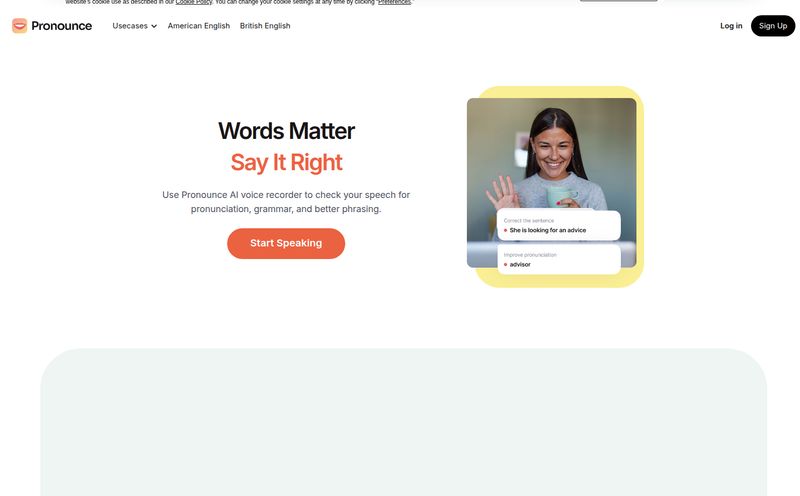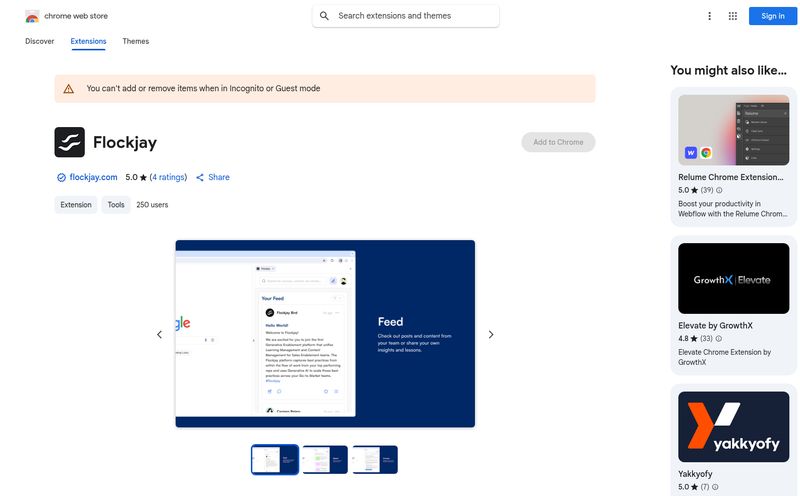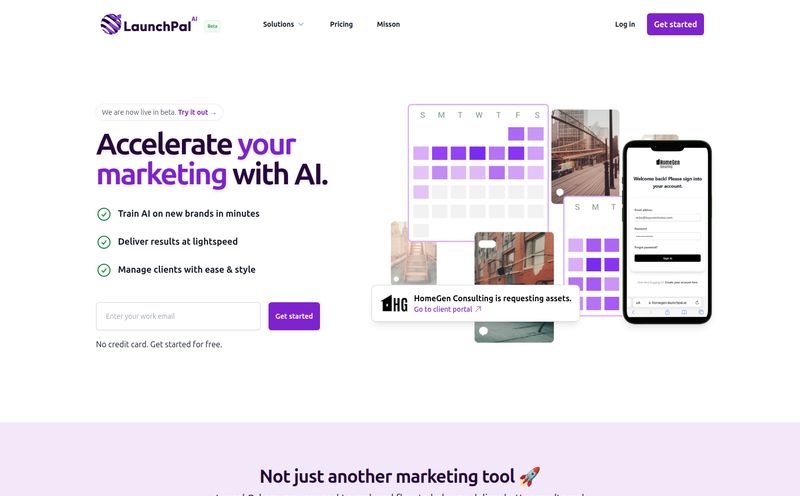Product launches can be a complete and utter nightmare. As someone who’s been in the marketing and SEO trenches for years, I’ve seen it all. The frantic Slack messages, the dozen different Google Docs that are all supposedly the “single source of truth,” the sales team getting talking points an hour before a demo... it’s organized chaos at its best. And a straight-up dumpster fire at its worst.
We’ve all tried to stitch together a solution. A little bit of Asana here, a sprinkle of Jira there, a whole lot of spreadsheets everywhere. It works, kind of. But it’s clunky. It’s inefficient. And something always, always falls through the cracks.
So, when I hear about a new platform that claims to be the “AI-powered Go-to-Market Ops platform,” my inner cynic immediately kicks in. Oh, really? Another one? But then I saw who Ignition was built for—Product Marketing Managers and Product Managers—and my curiosity got the better of me. These are my people, the ones living in the eye of the GTM storm. I had to take a look.
So, What Exactly Is Ignition Anyway?
Think of Ignition as the central nervous system for your entire go-to-market motion. It’s not just another project management tool; it’s a dedicated hub designed to unify all the messy, disconnected pieces of a product launch. From the initial spark of an idea to measuring its impact after launch, the goal is to have everything in one place.
It’s built to connect the dots between your product roadmap, your competitive research, your launch plans, and how you communicate all of that to your internal teams. The idea is to create a repeatable playbook, so you’re not reinventing the wheel for every single feature release. A novel concept, I know.

Visit Ignition
The “AI-powered” part isn't just marketing fluff, either. It’s baked into features meant to cut down on the manual grunt work that consumes so much of a PMM’s time. But more on that in a minute.
The Features That Actually Matter
A feature list is just a list until you see how it solves a real problem. I’m not going to just dump the spec sheet on you. Let’s talk about what some of these features mean in the real world.
Taming the Research Beast with AI
How many hours have you lost sifting through competitor websites, G2 reviews, and customer interview transcripts? It’s a time sink. Ignition has AI-powered competitive intelligence and customer research summarization. This means it can theoretically pull in all that data and give you the highlights. Instead of reading 50 reviews to find a pattern, the platform identifies it for you. This isn't about replacing a marketer's intuition; it's about feeding it with better data, faster. It’s the difference between panning for gold and having someone just hand you the nuggets.
From Messy Roadmaps to Clear Launch Plans
This is the core of it for me. Ignition combines roadmapping and idea management with launch campaign operationalization. Translation: your product roadmap can live in the same place as the plan to actually sell what’s on the roadmap. When a feature moves from ‘In Development’ to ‘Ready for Launch,’ the GTM plan is already connected to it. No more frantic meetings to “get alignment.” The alignment is built into the workflow. This is a big deal for keeping product, marketing, and sales teams from operating in their own little silos.
Automating the Annoying Stuff
Two features stood out to me here: AI copywriting and internal comms automation. The AI copywriter can help generate first drafts for things like release notes, blog posts, or sales enablement materials. It won't be perfect, but is it better than staring at a blank page? Absolutely. And the internal comms automation… chef’s kiss. It ensures that when a product launches, everyone from sales to support gets the right information at the right time, automatically. No more “I never got the memo” excuses.
The Good, The Bad, and The GTM Reality
No tool is perfect. Let’s get that out of the way. After digging in, here's my honest breakdown of where Ignition shines and where it might stumble.
On the plus side, having a single, unified platform is a massive win. The sheer reduction in context-switching between ten different apps is a productivity boost in itself. It genuinely seems to foster better coordination between teams, which is the holy grail for any product-led company. And honestly, the fact they offer a 100% free plan is fantastic. It lowers the barrier to entry so you can actually try it without getting budget approval for a six-month pilot program.
Now for the reality check. There's probably going to be a bit of a learning curve. This isn’t just another to-do list app; it’s a system. You and your team will need to invest some time to understand how to use it properly to get the full benefit. Also, it's a hub, which means it relies on integrations to be truly powerful. That’s not necessarily a bad thing, but it’s something to be aware of—it works with your stack, it doesn’t entirely replace it. And my personal pet peeve, the dreaded “Contact Us” for the top-tier ‘Moonshot’ plan pricing. I get why companies do it, but I still don’t like it.
Let's Talk Money: The Ignition Pricing Breakdown
Pricing is always a critical factor, so lets break down what Ignition offers. They've structured it into three pretty clear tiers, which I appreciate.
| Plan | Price | Who It's For |
|---|---|---|
| Free | $0 | For individuals or small teams just getting started. It gives you the core functionality to build a GTM process without any cost. Seriously, a great way to see if it works for you. |
| Liftoff | $99 per editor/mo (or $79/mo if billed annually) | Growing teams that need the AI and automation features. This is the sweet spot for most scale-ups where manual processes are starting to break. |
| Moonshot | Contact Sales | This is the enterprise plan. Think larger organizations that need advanced security, custom billing, and dedicated support. If you have multiple product lines and large GTM teams, this is your tier. |
In my opinion, the pricing model is smart. The free plan is robust enough to be genuinely useful, not just a frustrating teaser. The Liftoff plan seems fairly priced for the amount of automation and AI assistance you're getting, especially if you consider the time it saves.
So, Is Ignition Worth It For Your Team?
Here’s my final take. If you’re a Product Marketer or Product Manager and the phrase “launch readiness meeting” sends a shiver down your spine, you should probably check out Ignition. If your GTM process currently lives in a chaotic web of disparate documents and you constantly feel like you’re herding cats, this platform is designed specifically to solve your problem.
Some might argue that you can build this yourself with other tools. And you can. But you’ll spend your time maintaining the system instead of doing the strategic work that actually drives revenue. Ignition offers a purpose-built solution that lets you focus on the market, not on managing the process.
Is it for everyone? Maybe not. If you're a one-person startup with a very simple product, it might be overkill. But with that free plan, what have you got to loose by trying?
Frequently Asked Questions about Ignition
What’s the main benefit of Ignition over just using Jira and Google Docs?
The biggest difference is that Ignition is purpose-built for Go-to-Market. While you can wrangle Jira and Docs to manage a launch, Ignition connects your roadmap directly to your launch campaigns, automates internal communications, and provides GTM-specific analytics in one place. It’s about having context and a repeatable process, not just a collection of tasks and documents.
How good is the AI in Ignition really?
The AI is designed to be an assistant, not a replacement for a marketer. It excels at summarizing large volumes of text (like customer feedback) and providing first drafts for copy. Think of it as a tool to overcome writer's block and speed up research, which is a pretty solid use case in my book.
Is the free plan actually useful, or is it just a demo?
From what I can see, the free plan is genuinely useful. It allows you to build out a full, repeatable GTM motion. You miss out on the advanced automation, AI, and integrations of the paid plans, but for getting your process organized and centralized, it’s more than enough to get started and prove value.
Who is the ideal user for the Ignition platform?
The sweet spot is for Product Marketing Managers (PMMs) and Product Managers (PMs) in tech companies, especially those in the B2B SaaS space. It’s particularly helpful for teams that are scaling and finding that their old, informal ways of launching products are starting to cause friction and errors.
What kind of integrations does Ignition rely on?
While I don't have the full list, a platform like this typically integrates with tools like Slack for communication, Jira for development tracking, Salesforce for customer data, and platforms like G2 or Intercom for customer feedback. The goal is to pull data in, not force you to work in a silo. You'd want to check their site for the most current list.
My Final Thoughts
Look, I've seen a lot of tools come and go. Most are just slight variations of something that already exists. Ignition feels a bit different. It’s not trying to be a generic project manager; it’s taking on the very specific, very painful problem of GTM chaos. It’s an ambitious goal, but from what I’ve seen, the approach is sound.
By focusing on unifying the core pillars of a launch—research, roadmap, planning, and communication—it has the potential to be less of a tool and more of a methodology. And in a world where a successful launch can make or break a quarter, having a strong methodology is everything. It might just be the thing that turns your next launch from a dumpster fire into a well-oiled machine.



